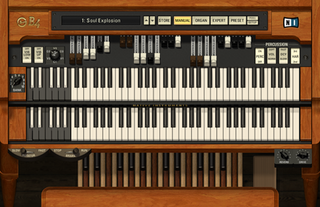 W
WThe B4 Organ II is a discontinued commercial, proprietary software synthesizer made by Native Instruments. The software runs as a stand-alone executable, or as a VST, DXi, or RTAS plugin in a Digital audio workstation. The software is an example of a "Clonewheel organ", an attempt at recreating the sound of a Hammond organ using software synthesis.
 W
WIn signal analysis, beat detection is using computer software or computer hardware to detect the beat of a musical score. There are many methods available and beat detection is always a tradeoff between accuracy and speed. Beat detectors are common in music visualization software such as some media player plugins. The algorithms used may utilize simple statistical models based on sound energy or may involve sophisticated comb filter networks or other means. They may be fast enough to run in real time or may be so slow as to only be able to analyze short sections of songs.
 W
WBing Audio is a music recognition application created by Microsoft which is installed on Windows Phones running version 7.5 and above, including Windows Phone 8. On Windows Phone 8.1, and in regions where the Microsoft Cortana voice assistant is available, Bing Music is integrated with Cortana and the music search history is a part of Cortana's "Notebook". The service is only designed to recognize recorded songs, not live performances or humming. Xbox Music Pass subscribers can immediately add the songs to their playlists. A unique feature compared to similar services is that Bing Audio continuously listens and analyzes music while most other services can only listen for a fixed amount of time. Bing Research developed a fingerprinting algorithm to identify songs.
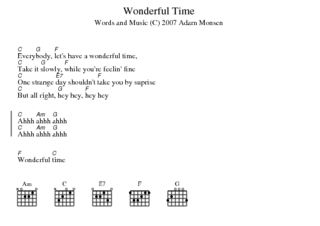 W
WThe ChordPro is an ASCII text file format for transcribing songs with chords and lyrics.
 W
WCommon Music Notation (CMN) is open-source musical notation software. It is written in Common Lisp and runs on a variety of operating systems and Common Lisp implementations.
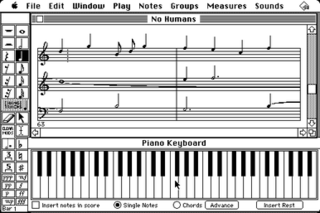 W
WDeluxe Music Construction Set (DMCS) is a 1986 music composition, notation and playback program for the Amiga and Macintosh. The program was originally released as Will Harvey's Music Construction Set for the Apple II and other computers, but was redesigned for the deluxe version. DMCS was created by Geoff Brown and published by Electronic Arts (EA). Ariolasoft published the program in Europe under license from EA.
 W
WDoremikko (ドレミッコ) is a music video game developed by Konami for the Family Computer Disk System, and published in 1987.
 W
WDorico is a scorewriter software; along with Finale and Sibelius, it is one of the three leading professional-level music notation programs.
 W
WeJay is a series of musical arrangement software and games, primarily for Microsoft Windows. The first edition, Dance eJay, was released in 1997. It supports eight tracks of audio and, as with its successors, permits the arrangement of sound bites by a drag-and-drop interface. Since the original Dance eJay, there have been many releases catering to different music genres and users, including techno and hip-hop, as well as a PlayStation 2 edition.
 W
WElektrik Piano is a sample-based software synthesizer developed by Native Instruments. The instrument is an emulation of four "classic" electric pianos – the Fender Rhodes MKI and MKII, the Hohner Clavinet E7 and the Wurlitzer A200.
 W
WFronimo is a software program for engraving of tablature for lutes, archlute, theorbo and other plucked and bowed instruments.
 W
WHydrogen is an open source drum machine created by Alessandro Cominu, an Italian programmer who goes by the pseudonym Comix. Its main goal is to provide professional yet simple and intuitive pattern-based drum programming.
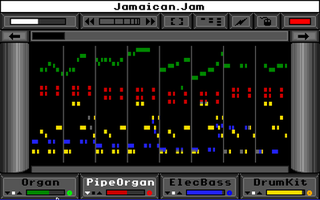 W
WInstant Music is interactive music software released by Electronic Arts (EA) in 1986. It was developed first for the Amiga, but then ported to other platforms, such as Apple IIGS, and Commodore 64.
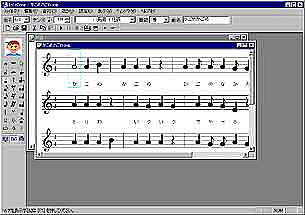 W
WLaLaVoice (ララボイス) is a vocal synthesizer designed for the Japanese language.
 W
WLMMS is a digital audio workstation application program. When LMMS is executed on a computer with appropriate hardware, it allows music to be produced by arranging samples, synthesizing sounds, playing on a MIDI keyboard, and combining the features of trackers and sequencers. It supports the Linux Audio Developer's Simple Plugin API (LADSPA), LV2 and Virtual Studio Technology (VST) plug-ins. It is free and open source software, written in Qt and released under GPL-2.0-or-later.
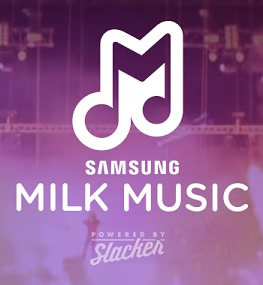 W
WMilk Music was a freemium online music streaming service, with music streams and a recommendation engine powered by Slacker Radio, that offered ad-supported free streaming and ad-free subscription streaming services originally meant to compete with Pandora. When first introduced in March 2014, it was first available only as an app for Samsung headsets. In January 2015, Milk Music was made available to everyone as a website.
 W
WMusiCAD is a scorewriter program originally designed for folk music featuring irregular meter and automatically generated accompaniment voices (bass/chords) from chord symbols and specified time signature. Created lead sheets are audibly verifiable. One of its design goals was to be as predictable as possible: 'what-you-write-is-what-you'll-hear'. The resulting music engraving is the result of the notes used and an applied set of rules that determine how notes should be drawn. After changing the layout parameters or after transpose the (new) rules are applied, perhaps changing page layout completely.
 W
WMusicBee is a freeware media player for playback and organization of audio files on Microsoft Windows, built using the BASS audio library.
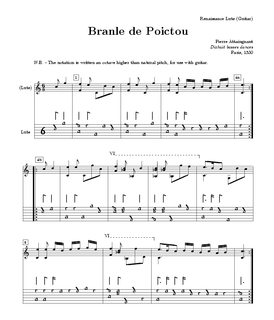 W
WMusiXTeX is a suite of open source music engraving macros and fonts that allow music typesetting in TeX, released under the GPL-2.0-or-later license.
 W
WNIAONiao Virtual Singer, is a freeware vocal synthesizer application built for Chinese and is the first singing vocal synthesizer made in China.
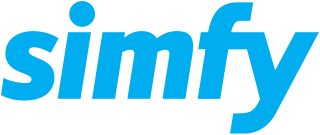 W
WSimfy Music was a music subscription service available in Germany, Austria, and Switzerland, It was available as a website and also had clients for iPhone, Android, and BlackBerry which can play streaming music or cache songs for offline playback. The web-based service also offered a cross-platform client based on Adobe Air. Its library had content from the four major record labels, as well as the Merlin Network and aggregators such as The Orchard, and Finetunes. Simfy also offered social networking, allowing users to share playlists and follow others to see what music they listen to. In June 2014, MTN partnered with Simfy for streaming music
 W
WSonic Pi is a live coding environment based on Ruby, originally designed to support both computing and music lessons in schools, developed by Sam Aaron in the University of Cambridge Computer Laboratory in collaboration with Raspberry Pi Foundation.
 W
WSynthEdit is a shareware Windows application which uses a modular VPL to create music synthesizers and effects units. These can then be compiled as VST plug-ins for use in audio applications. SynthEdit first released in 1999 by Jeff McClintock, and version 1.0 was released on 23 June 2005. Many programmers have since created additional freeware and payware modules for use within SynthEdit's programming environment.
 W
WVCV Rack is a free and open-source cross-platform software modular synthesizer.